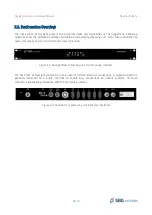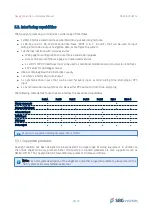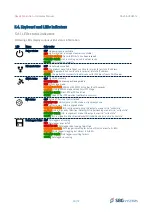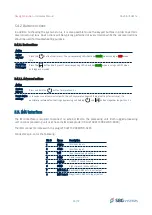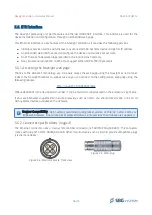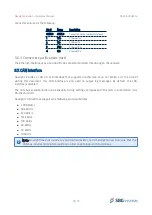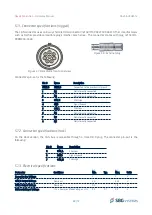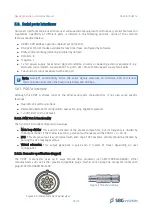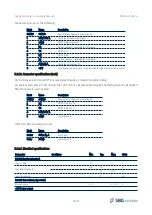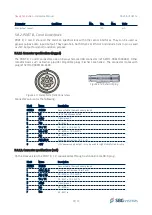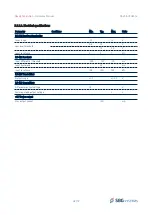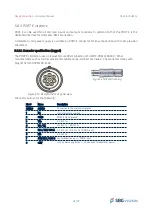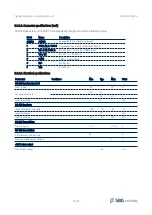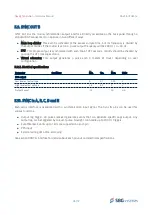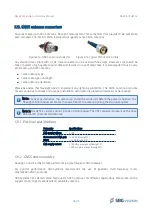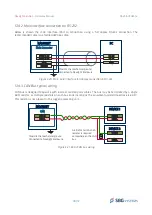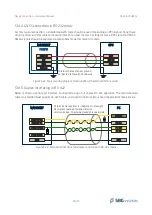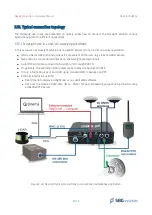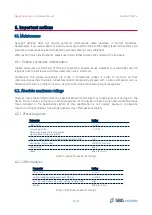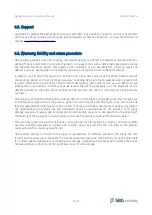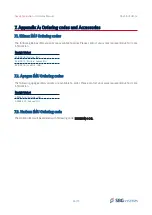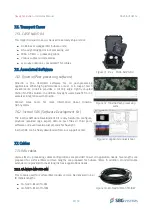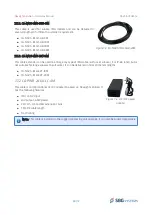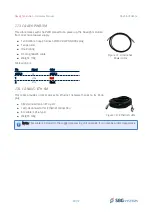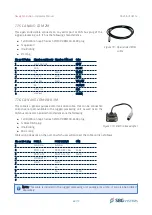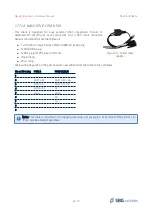
Navsight Solution
– Hardware Manual
NAVSIGHTHM.1.5
5.11. GNSS antenna connectors
To connect external GNSS antennas, Navsight features two TNC connectors that provide IP-68 protection
even unmated. The internal GNSS receiver only supports active GNSS antennas.
Any standard coax cable with a TNC male connector can be used with Navsight. However, care should be
taken to select a high quality coaxial cable with low loss in case of long cable. It is also required to use a very
similar setup on both antennas:
●
Same antenna type
●
Same cable type and length
●
Same antenna orientation
Please be advise that Navsight doesn't implement any lightning protection. The GNSS antenna and cable
are very sensitive to strikes and a proper installation with lightning protection devices may be required.
Note: For best performance, the antenna(s) should be connected before the power is applied. The
Navsight GNSS receiver estimates the noise floor of the antenna during the startup sequence.
Note 2: Navsight-E versions do not include a GNSS receiver. The TNC connectors present on the back
side are left unconnected internally.
5.11.1. Electrical specifications
Parameter
Specifications
LNA supply voltage
5 VDC
Recommended LNA gain
range
15-45 dB (Navsight-S)
> 32 dB (Navsight-T)
LNA supply current
< 150 mA per antenna (Navsight-S)
< 200 mA per antenna (Navsight-T)
5.11.2. GNSS antenna advice
Navsight-S and -T embed a high performance, triple frequency GNSS receiver.
For optimal performance, SBG Systems recommends the use of geodetic multi-frequency, multi-
constellation GNSS antennas.
SBG Systems has selected some high quality GNSS antennas for different applications. Please refer to the
support center to get more details on available antennas.
46/73
Figure 5.15: Typical TNC antenna cable
Figure 5.16: GNSS antenna connector

